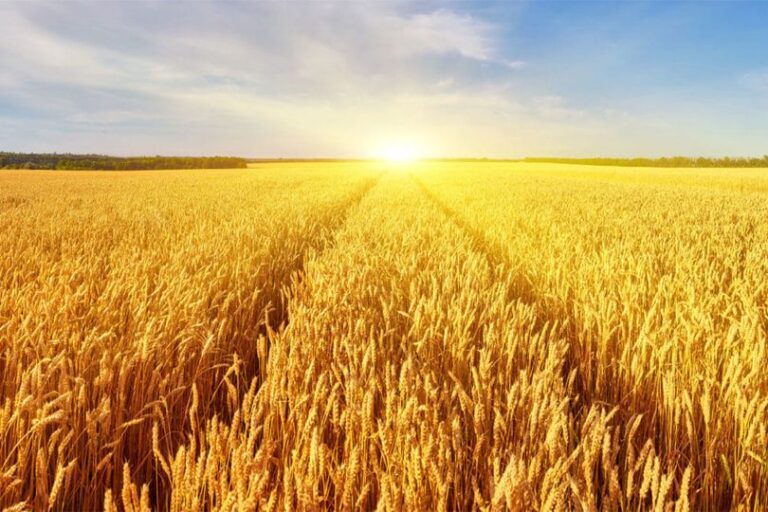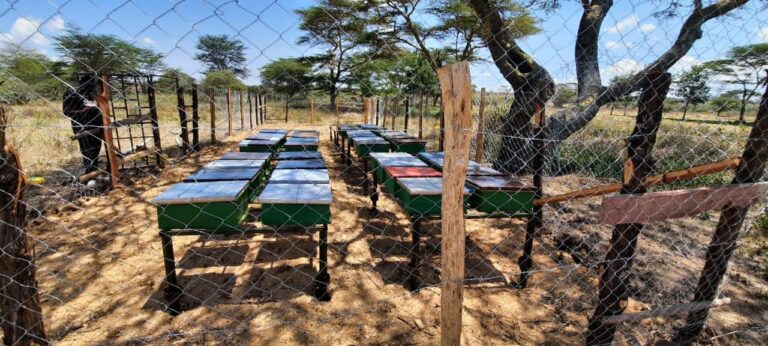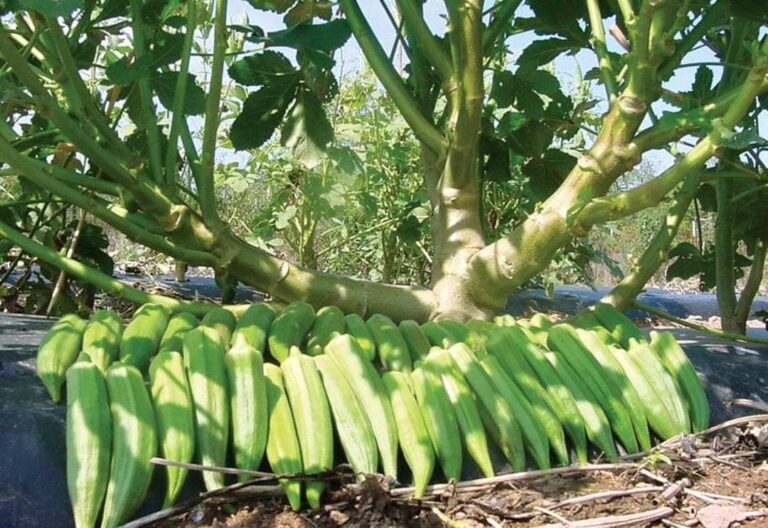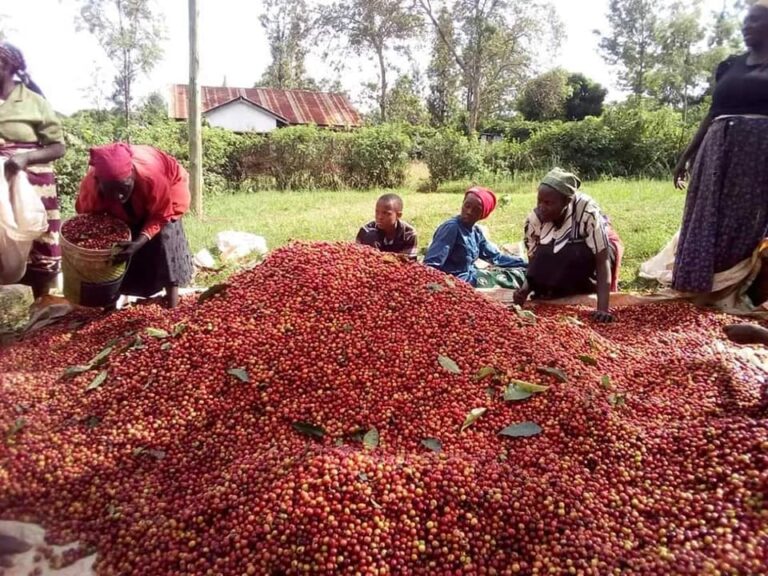Garlic Farming Profit Per Acre In Kenya
How profitable is garlic farming per acre in Kenya? Garlic farming in Kenya can yield between 3,000 to 5,000 kilograms per acre. With current market prices ranging from KES 200 to KES 400 per kilogram, farmers can potentially earn gross revenues of KES 600,000 to KES 2,000,000 per acre.
Garlic farming can be a highly profitable venture in Kenya, with the potential to generate significant income per acre.
It is important to note that profitability depends on various factors such as the farmer’s agricultural practices, access to markets, and management of pests and diseases. Proper soil preparation, irrigation, weeding, and pest and disease control are crucial for maximizing yields and profits.
key points about garlic farming profits in Kenya:
- One acre of garlic can yield around 5 tons of garlic bulbs. At a farm gate price of KSh 150 per kg, the gross income per acre would be approximately KSh 750,000.
- With a starting capital of KSh 75,000 on a 1⁄4-acre farm, one can produce between 1.2-1.5 tonnes of garlic, fetching around KSh 180,000-KSh 2250,000. This translates to a potential profit of KSh 105,000 to KSh 150,000 per 1⁄4 acre.
- Garlic prices in Kenya range from KSh 150-KSh 250 per kilogram, depending on season and grading. A single garlic head can sell for between KSh 10 and KSh 50.
- Under good agricultural practices, an acre of garlic can produce between 4000 kg to 5000 kg. With the current market price of around KSh 200 per kg, a farmer can potentially earn KSh 800,000 to KSh 1,000,000 per acre.
Garlic Farming in Kenya
Garlic farming in Kenya offers substantial profit potential, with yields averaging between 3,000 to 5,000 kilograms per acre. Factors influencing profitability include seed quality, farming practices, market prices, and cost management.
Garlic, known for its culinary and medicinal properties, has seen a rising demand in Kenya and internationally. This has led to an increase in garlic cultivation across various regions in the country.
The crop’s resilience and the high market prices make it an attractive option for farmers. However, understanding the intricacies of garlic farming, from soil preparation to harvesting, is crucial for optimizing profits.
Garlic farming in Kenya has emerged as a lucrative agricultural venture, drawing the interest of many farmers seeking to maximize their returns on investment. This comprehensive guide delves into the profitability of garlic farming per acre, exploring the costs, yields, and best practices to ensure success.
Understanding Garlic Farming Profit in Kenya
Garlic farming in Kenya is predominantly done by small to medium-scale farmers. The country’s favorable climate, coupled with the increasing demand for garlic, makes it an ideal location for cultivating this high-value crop.
Garlic thrives in well-drained, loamy soils with a pH range of 6.0 to 7.5, and regions with adequate rainfall or reliable irrigation systems are most suitable for its growth.
Garlic Farming Profit Per Acre In Kenya
Initial Investment and Costs
The initial investment for garlic farming includes land preparation, seed purchase, fertilizers, labor, and irrigation setup. On average, the cost of cultivating one acre of garlic in Kenya is approximately KES 100,000 to KES 150,000. This covers:
- Land Preparation: KES 10,000 to KES 20,000
- Seeds: KES 50,000 to KES 70,000 (depending on seed variety and quality)
- Fertilizers and Pesticides: KES 15,000 to KES 25,000
- Labor: KES 15,000 to KES 20,000
- Irrigation: KES 10,000 to KES 15,000
Garlic Yield Per Acre
The yield of garlic per acre varies based on several factors, including seed quality, farming practices, and climatic conditions. On average, farmers can expect a yield of 3,000 to 5,000 kilograms per acre.
With the current market price of garlic ranging from KES 200 to KES 400 per kilogram, the gross revenue per acre can be substantial.
Calculating Profit Per Acre
To calculate the profit per acre, we subtract the total costs from the gross revenue. For instance, if a farmer yields 4,000 kilograms of garlic per acre and sells it at KES 150 to 200 per kilogram, the gross revenue would be:
4,000 kg * KES 200/kg = KES 800,000
Assuming the total costs amount to KES 150,000, the net profit would be:
KES 1,200,000 – KES 150,000 = KES 650,000
Profitability Factors in Garlic Farming
Several factors influence the profitability of garlic farming in Kenya:
- Climate and Soil Conditions: Optimal climate and soil conditions are essential for high yields.
- Seed Quality: Using certified, disease-free seeds enhances productivity.
- Farming Practices: Employing best practices in cultivation, pest control, and fertilization boosts yields.
- Market Prices: The market price of garlic can vary, impacting overall profitability.
- Cost Management: Effective management of input costs (seeds, fertilizers, labor) is critical.
Best Practices for Maximizing Garlic Farming Profit
Choosing the Right Garlic Variety
Selecting the appropriate garlic variety is crucial for maximizing yield and profit. In Kenya, common varieties include the softneck and hardneck types. Softneck garlic is generally preferred for its higher yields and longer shelf life, while hardneck varieties are favored for their robust flavor.
Soil Preparation and Fertilization
Proper soil preparation is vital for successful garlic farming. The soil should be well-drained, rich in organic matter, and free from weeds.
Regular soil testing can help determine the nutrient requirements, ensuring the appropriate application of fertilizers. Organic fertilizers, such as compost and well-rotted manure, enhance soil fertility and structure.
Irrigation and Water Management
Garlic requires consistent moisture throughout its growing period, particularly during bulb formation. Efficient irrigation systems, such as drip irrigation, help maintain optimal soil moisture levels while conserving water. Overhead irrigation should be avoided to prevent the spread of fungal diseases.
Pest and Disease Management
Garlic is susceptible to various pests and diseases, including nematodes, thrips, and fungal infections. Integrated pest management (IPM) strategies, combining cultural, biological, and chemical control methods, are effective in minimizing pest and disease impact. Regular monitoring and timely intervention are crucial.
Harvesting and Post-Harvest Handling
Harvesting garlic at the right time is essential to ensure quality and maximize shelf life. Garlic is typically harvested when the lower leaves turn yellow and start to dry.
Proper curing and storage practices, such as drying the bulbs in a well-ventilated area and storing them in a cool, dry place, help maintain quality and reduce post-harvest losses.
Market Analysis and Sales Strategies
Understanding Market Demand
The demand for garlic in Kenya is influenced by both local consumption and export opportunities. Garlic is a staple ingredient in many Kenyan dishes and has a growing demand in the pharmaceutical and processing industries.
Understanding market trends and consumer preferences can help farmers make informed decisions about production and marketing.
Exploring Market Channels
Farmers can explore various market channels to sell their garlic, including:
- Local Markets: Selling directly to consumers in local markets ensures quick sales and immediate cash flow.
- Supermarkets and Retail Chains: Supplying garlic to supermarkets and retail chains provides access to a larger customer base.
- Export Markets: Exporting garlic to international markets can yield higher prices, provided the produce meets export quality standards.
- Processing Companies: Supplying garlic to processing companies that manufacture garlic-based products (e.g., garlic powder, oil) can be a lucrative option.
Value Addition and Branding
Adding value to garlic products through processing and branding can enhance profitability. Processed garlic products, such as garlic powder, paste, and oil, have a longer shelf life and can fetch higher prices. Creating a recognizable brand and packaging the products attractively can differentiate them in the market.
Challenges in Garlic Farming
Climatic Variability
Climate change poses a significant challenge to garlic farming in Kenya. Erratic rainfall patterns and extreme weather events can adversely affect crop yields. Adopting climate-smart agricultural practices, such as rainwater harvesting and the use of drought-resistant garlic varieties, can mitigate these impacts.
High Input Costs
The high cost of inputs, such as quality seeds, fertilizers, and pesticides, can be a barrier for many farmers. Access to affordable credit facilities and government subsidies can help alleviate this challenge, enabling more farmers to venture into garlic cultivation.
Pest and Disease Pressure
The prevalence of pests and diseases requires continuous monitoring and management. Developing resistant garlic varieties and promoting integrated pest management practices can reduce the reliance on chemical pesticides and enhance sustainability.
FAQs
How much profit can I make from garlic farming per acre in Kenya?
Profit from garlic farming per acre can vary based on factors like yield, market prices, and input costs. On average, farmers can expect a net profit of KES 800,000 to KES 1,200,000 per acre.
What is the best time to plant garlic in Kenya?
The best time to plant garlic in Kenya is during the long rainy season, which typically starts in March and April. This ensures that the crop receives adequate moisture during its growth period.
How long does it take for garlic to mature?
Garlic typically takes about six to eight months to mature, depending on the variety and growing conditions. Harvesting usually occurs in the dry season to facilitate proper curing and storage.
What are the common pests and diseases affecting garlic in Kenya?
Common pests include nematodes and thrips, while diseases such as white rot and rust can affect garlic crops. Integrated pest management and timely intervention are crucial for minimizing damage.
How can I improve the yield of my garlic crop?
Improving yield involves selecting quality seeds, preparing the soil adequately, using appropriate fertilizers, ensuring proper irrigation, and managing pests and diseases effectively.
What are the main markets for garlic in Kenya?
Main markets include local markets, supermarkets, retail chains, export markets, and processing companies. Diversifying market channels can enhance profitability.






